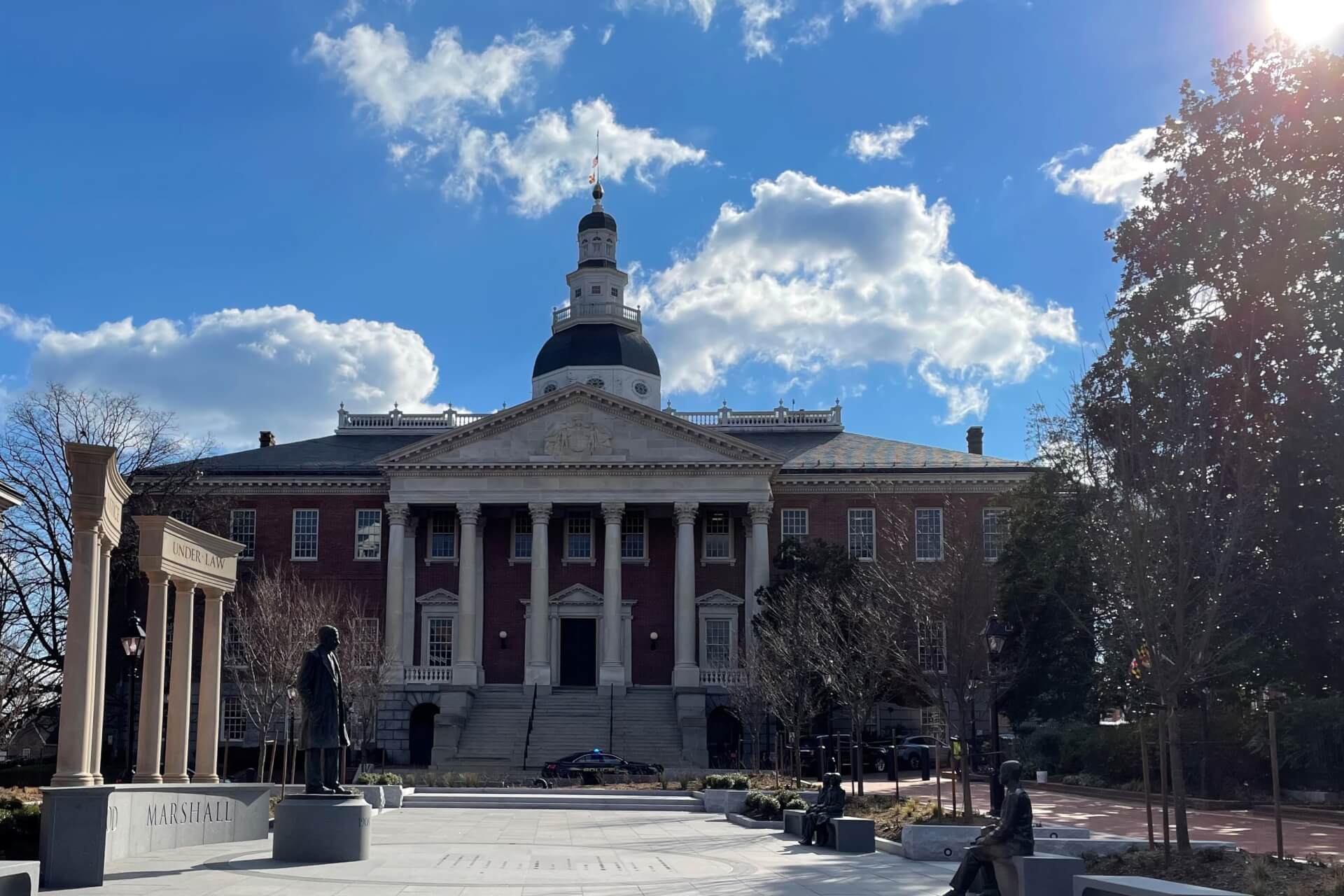Hogan Releases $49.35 Billion Budget, With Slight Dip in State Spending

In the hours after it was officially introduced, lawmakers in the General Assembly said Gov. Lawrence J. Hogan Jr.’s proposed budget represented a promising, bipartisan framework to guide the recovery of Maryland and Marylanders after the COVID-19 pandemic.
It was an unusual budget rollout, with the budget bills introduced at pro forma floor sessions with barely a handful of lawmakers in attendance as a precaution during the pandemic, and the constitutionally mandated state budget presentation coinciding with the U.S. presidential inauguration. Legislative reaction was subdued, compared to previous years.
The $49.35 billion spending plan for the 2022 fiscal year represents a 2.2%, or $1.1 billion, decrease in spending over the current year’s budget. The spending declines in part because temporary federal Coronavirus Aid Relief, and Economic Security (CARES) Act funding is exhausted.
According to legislative analysts, the budget proposal does not include any of the $1.4 billion the state anticipates receiving as a result of the federal COVID Relief Act passed in December, which includes funding for education, transportation, pandemic-related expenses and other areas.
Under Hogan’s proposed budget, the state would spend slightly more on health programs in 2022 ― $17.34 billion compared to $16.59 billion in the current year ― and about the same on elementary and secondary education ― $9.03 billion compared to $9.12 billion in the current year. Funding for K-12 elementary schools is proposed at $7.5 billion, about $213 million more than required by state funding formulas. Higher education funding would remain roughly the same, with about a 1% decrease, and tuition increases for students would be capped at 2%.
Hogan’s budget would slow down a legislative push on community college funding by about $26.6 million, limiting growth to 5.5%, or a $13.6 million increase.
Sen. Guy J. Guzzone (D-Howard), chair of the Senate Budget & Taxation Committee, said that could be one area where lawmakers seek to make a change, especially as job training will be a focus in the state’s economic recovery. But overall, Guzzone said the proposed budget was “a good framework for us to start with.”
The largest cut in Hogan’s budget proposal is a 23% decrease in human resources, from about $4.2 billion in the current fiscal year to just under $3.3 billion in 2022. No funds are included in the budget for a general salary increase for state employees; the state has agreed to provide some state union workers with a 1% salary increase and $500 bonus if certain revenue goals are exceeded.
In a budget transmission letter to legislative leaders, Hogan noted that an early freeze on state spending and hiring during the pandemic helped the bottom line, and so did the fact that the economy did not decline as precipitously as estimated and recovered more quickly. While a dire financial report in April predicted up to a $4 billion revenue loss in the 2022 fiscal year, the pandemic’s effect on state revenues has been more moderate. The state ended the 2020 fiscal year with revenues about $100 million less than estimates and the state is expecting a $921 million decline over the next two fiscal years.
Even so, Hogan’s budget proposal would maintain $1.2 billion in the state’s rainy day fund and other reserves. Such a move could protect the state’s AAA bond rating, which helps the state finance projects at favorable interest rates. Hogan’s capital budget proposal includes $833 million for school construction projects.
“We look forward to reviewing the details, but the Governor’s high level overview sounds promising,” Senate President Bill Ferguson (D-Baltimore City) said in a statement on Wednesday. “We will continue our unified, bipartisan focus on getting targeted resources to the most vulnerable Marylanders for this once in 100 year pandemic.”
Some of Hogan’s budget proposals are likely to draw debate.
The governor proposes a RELIEF Act of 2021 that would provide state payments to low-income Marylanders, small businesses and people receiving unemployment, among others.
The governor’s budget also proposes to begin phasing out income tax on retirement income in 2023 and expand tax relief for military retirees and first responders; Hogan said this week it would amount to a $1 billion tax cut. Legislative analysts say ongoing revenue losses from the proposals would grow to $401 million in 2026. Earlier this week, House Appropriations Chairwoman Maggie L. McIntosh (D-Baltimore City) said the retiree tax break, which failed to move forward last session, was also unlikely to succeed this year.
A legislative analysis released Wednesday, said overriding Hogan’s veto of a 10-year education reform plan would not increase the 2022 budget, but would increase general fund spending by 2026.




 Creative Commons Attribution
Creative Commons Attribution